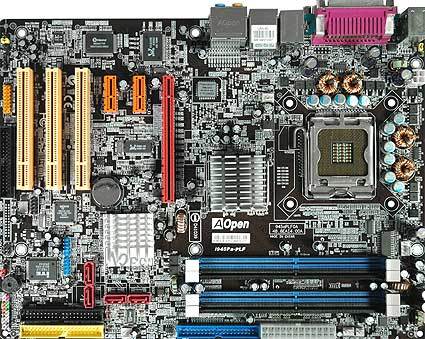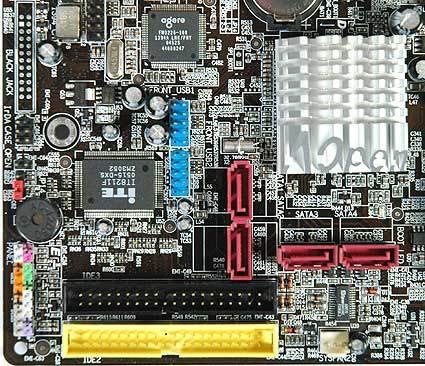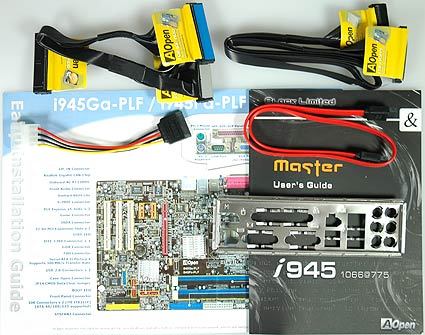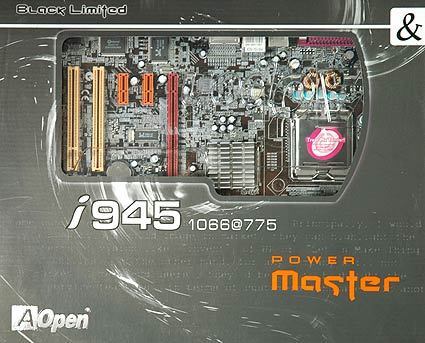The Value Connection of 6 Intel 945P Motherboards
AOpen I945Pa-PLF: Innovative Energy Management
Board-Revision: unknown
BIOS-Version: 1.04
There are neither optical audio connectors nor a port 80 diagnosis function on this board, and it has less sophisticated overclocking options, but its feature set is still complete. In contrast to Abit, AOpen includes a piezo PC speaker, a game port, more fan headers and some components that could prove important for users who want to upgrade their system.
The board is cryptically called i945Pa-PLF. Anyone who wants to guess what this model name means might conclude that "P" stands for PATA (there is an additional UltraATA/133 controller with two more channels), "L" means LAN and "F" certainly represents Firewire, as we found an additional controller for 1394a. AOpen placed three 32-bit PCI slots on the motherboard.
One of the most attractive features of this motherboard could be the PowerMaster function. Once enabled in the BIOS, it allows for selecting a performance mode or a silent mode, which allows the clock speed to be dynamically adjusted to the current processing load. Aopen thus complements and goes beyond the Enhanced SpeedStep features which are part of the Pentium 4 600 series and the Pentium D.
While SpeedStep alters the multiplier, PowerMaster reduces the FSB speed from 200 to only 140 MHz in silent mode when idle. As the multiplier is reduced at the same time (from 16 to 14), the resulting clock speed is 1.96 GHz only. Naturally, the cooling requirements are considerably lower here, and the CPU fan can operate at a lower speed. Enabling the performance mode keeps SpeedStep enabled, but will raise the FSB by 5% (10 MHz up to 210 MHz) under a high system load. The result here is 3.36 GHz, rather than 3.20 GHz in the case of our Pentium D 840.
Thanks to PowerMaster, users who demand high performance as well as lower power consumption and noise-levels will get their money's worth. However, we kept PowerMaster disabled while running the benchmarks.
Get Tom's Hardware's best news and in-depth reviews, straight to your inbox.
AOpen's sound system is HDA compliant (High Definition Audio) and all connectors are color-coded. But once again the floppy connector was placed unfavorably at the lower edge of the board.
Current page: AOpen I945Pa-PLF: Innovative Energy Management
Prev Page Abit AL8-V: For Overclockers Next Page Powermaster Performance Mode
Patrick Schmid was the editor-in-chief for Tom's Hardware from 2005 to 2006. He wrote numerous articles on a wide range of hardware topics, including storage, CPUs, and system builds.




